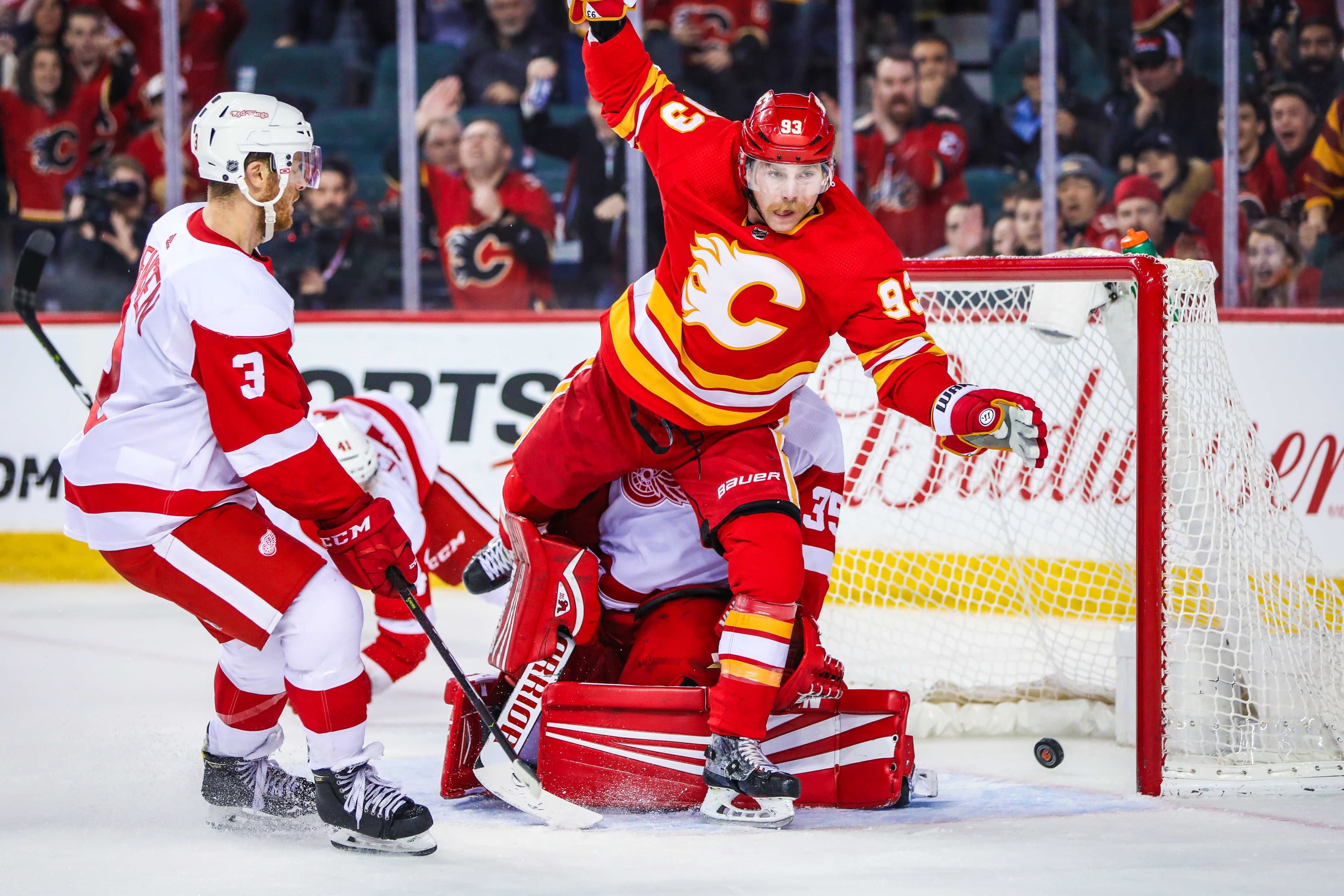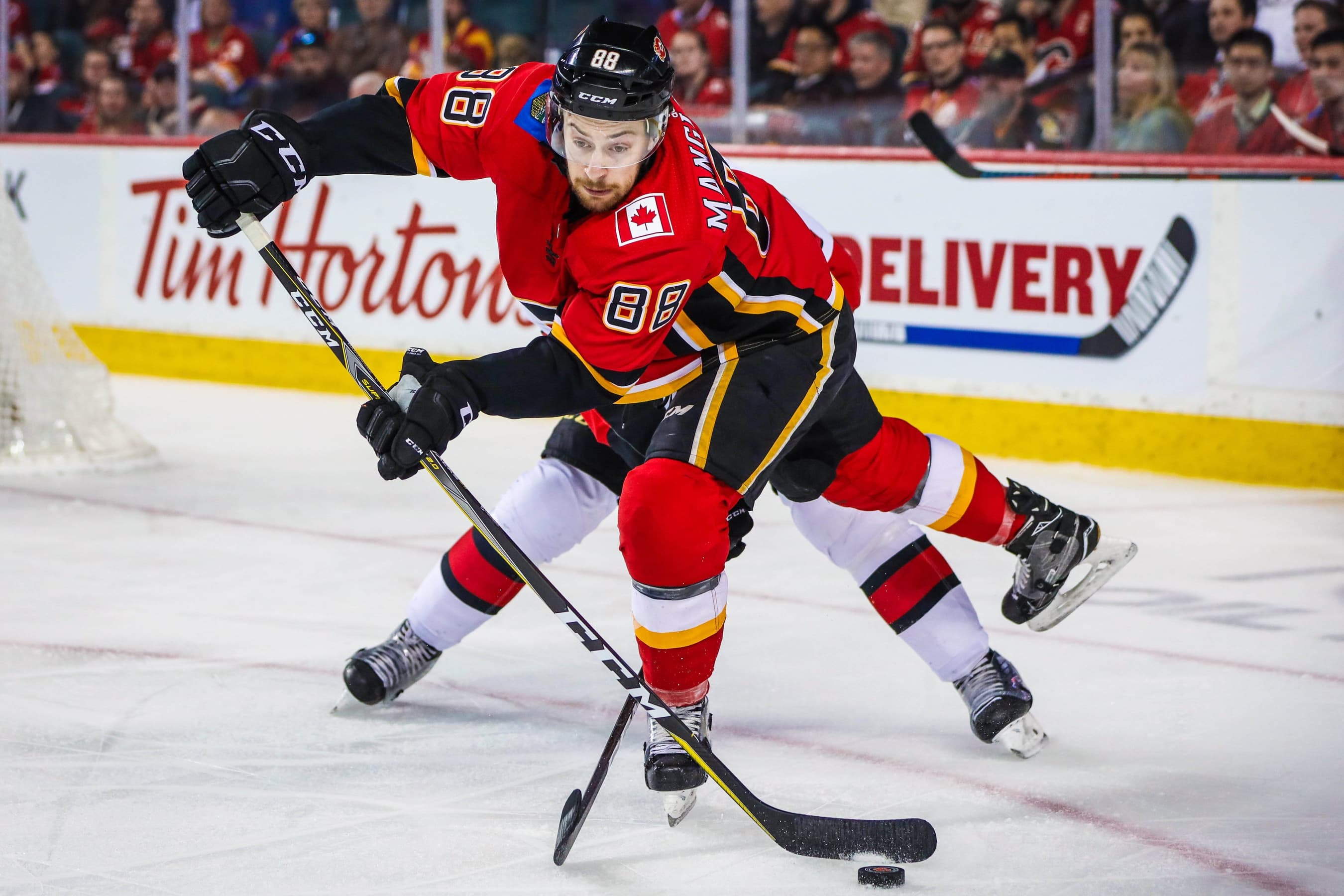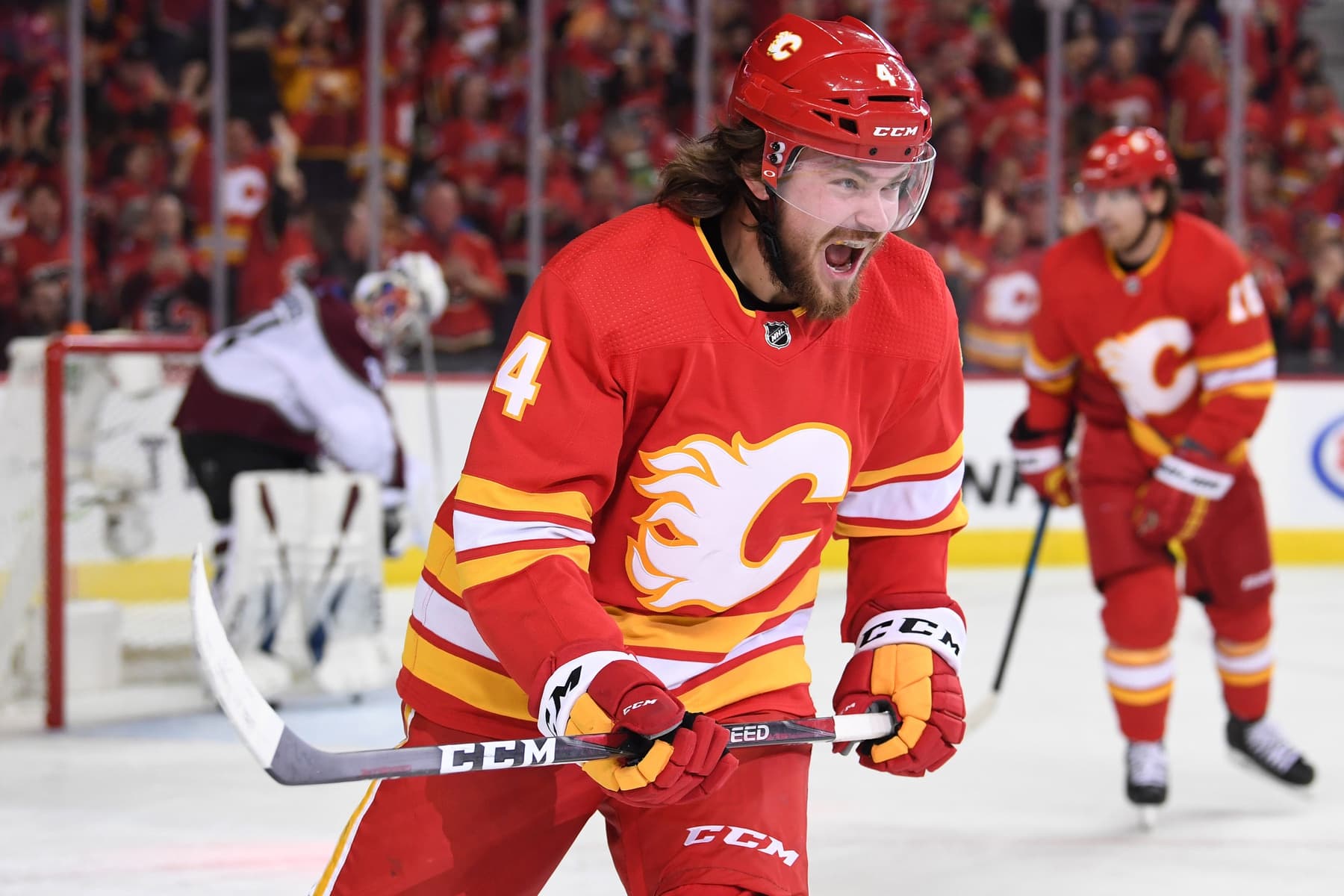Preseason Sam Bennett is just another monster
Nation Sites
The Nation Network
FlamesNation has no direct affiliation to the Calgary Flames, Calgary Sports and Entertainment, NHL, or NHLPA
Sam Bennett one of three Flames poised for a big offensive step

Photo credit: Sergei Belski-USA TODAY Sports
Sep 30, 2019, 12:00 EDTUpdated: Sep 30, 2019, 12:58 EDT
Career years from numerous key players were among the biggest reasons Calgary put together their second-best regular season in team history last year. Some suggest a few of those players are in line for backward steps this season, which is understandable. One way to mitigate the potential of that happening is with significant progression elsewhere on the roster. Sam Bennett leads a trio of players trending in that direction.
@Sam Bennett
Following a promising 36-point rookie campaign, Bennett’s offensive numbers have been flat since. Bennett hit 27 points last season following two straight years with 26. While those counting totals don’t necessarily hint at a massive breakout, a look at Bennett’s underlying numbers last season paint a more promising picture. In his 71 games, Bennett was more impactful at five-on-five than his raw point totals would suggest. All scoring chance data courtesy Natural Stat Trick.
On-ice | Individual | ||||
CF% | HDCF% | OZS% | S/60 | CF/60 | HDCF/60 |
53.5 | 55.5 | 54.1 | 7.3 | 13.0 | 4.63 |
The most promising trend was Bennett’s ability to generate high danger scoring chances, which he did at an impressive rate. Bennett has led the Flames in even strength HDCF/60 the last two seasons, which tells us he’s getting to the right places in the offensive zone.
Of Bennett’s 174 shot attempts last season, 62 of them came from inside the house, which converts to 35.6% of the time. To illustrate how impressive that correlation is, compare it to Johnny Gaudreau (24.8%), Sean Monahan (30.8%), Matthew Tkachuk (31.8%), and Elias Lindholm (31.0%).
The fact Bennett has created high end chances at a good rate over the last two seasons is a positive trend. For it translate to increased counting numbers, Bennett needs to escalate his volume of shots and attempts, which is easier said than done.
Bennett’s 2019 pre-season has been encouraging, though, and I think he’ll be given the chance at an expanded offensive role at even strength. If Bennett continues generating quality chances at a similar clip as the last two seasons, increased ice time will almost certainly up his offensive totals. That should also lead to more involvement on the power play, which gives Bennett that much more opportunity at a career season.
@Andrew Mangiapane

With his bizarre contract impasse in the rearview mirror, it would be a stunner if Mangiapane didn’t have a breakthrough season. Based on what I saw in 44 NHL games last year and how he’s performed in the 2019 preseason, Mangiapane looks like a regular top nine forward. Based on his underlying metrics from last season, that’s a promising development for Calgary.
CF% | Rank | HDCF% | Rank | G/60 | Rank | P/60 | Rank | HDCF/60 | Rank |
54.9 | 7th | 61.2 | 1st | 1.1 | 1st | 1.79 | 8th | 4.42 | 2nd |
What the above table shows us is Mangiapane was one of the team’s most effective forwards last season, even if he only averaged 10:33 of ice time per game. Mangiapane formed a solid connection with Derek Ryan, which is why no one is surprised they’ve spent a lot of time together in training camp. That pairing looks like a winner and should be in line for more ice time to start the year.
Much like Bennett, if Mangiapane’s progression stays on trend, head coach Bill Peters won’t hesitate to reward him with power play time. With his shot and finishing ability from in tight, Mangiapane could be a very nice sleeper weapon as the season goes along.
@Rasmus Andersson

Andersson is coming off an outstanding rookie season. 2018-19 started with Andersson in a typically sheltered role as a rookie defenceman. He ended the season on the Flames’ top pair and put himself on the radar as a cornerstone player for years to come.
OCT. 3 – JAN. 22 | FEB. 1 – APRIL 6 | ||||||
GP | CF% | HDCF% | OZS% | GP | CF% | HDCF% | OZS% |
48 | 47.0 | 46.4 | 59.1 | 31 | 56.2 | 60.0 | 54.2 |
Andersson is poised to vault himself into a new stratosphere this season, especially if his offensive numbers progress the same way his overall game has. The first positive sign is how we’ve seen Andersson used throughout training camp: as a regular on Calgary’s second power play unit. The Flames only started using Andersson in that role in the latter stages of last season, so a full year of PP usage should lead to a natural bump in points.
Andersson’s five-on-five role is going to be interesting to monitor, too. He’s spent very little time on Mark Giordano’s right side through training camp, with the Flames opting instead to use TJ Brodie there. Andersson has seen time paired with either Andrew MacDonald or Oliver Kylington, but I’m not convinced it’ll stay that way all season long. The more time Andersson spends with Giordano, the better his offensive totals will likely be.
Breaking News
- Flames Prospect Roundup: Jacob Battaglia had a four-point night
- NHL Notebook: Sabres fire general manager Kevyn Adams
- Beyond the Boxscore: Flames extinguished by Celebrini magic in 6-3 loss to the Sharks
- 3 predictions for the rest of the Flames season
- Report: The Flames have received plenty of calls about Rasmus Andersson since the Quinn Hughes trade
